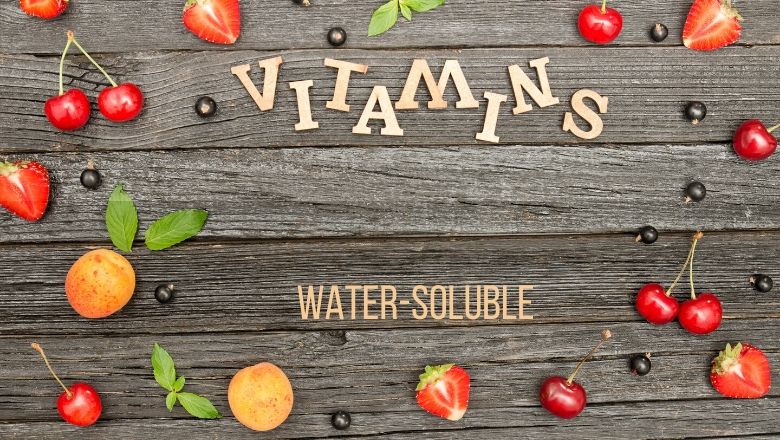B1 (Thiamine Pyrophosphate)
-Enhances circulation
-Helps nerve function and cognition
-Aids with carbohydrate metabolism
Beware: deficiencies seen with alcoholics, antibiotics and oral contraceptive use
Sources: whole grains, wheat germ, brewer’s yeast
RDA: 20-25 mg/day
B2 (Riboflavin) (active forms: FAD or FMN)
-Necessary for RBC formation, antibody production and cell growth
-Allows body to maintain serotonin levels
Beware: deficiencies with oral contraceptives, alcohol, antibiotics and strenuous exercise
Sources: whole grains, wheat germ, brewer’s yeast AND dairy
RDA: 20-25 mg/day
B3 (active forms: Niacin, Niacinamide, Nicotinic Acid)
-Needed for proper circulation and healthy skin
-Helps with carb, protein and fat metabolism
-Decreases cholesterol
Beware: greater than 50-100 mg/day can lead to Niacin flush
Sources: whole grains, wheat germ, brewer’s yeast AND potatoes
RDA: 10-25 mg/day
B5 (Pantothenic Acid)
-Anti-stress vitamin: production of adrenal hormones
-Helps in producing, transporting and releasing energy from fat
-Cholesterol synthesis is dependent on it
-Works with other B vitamins to make ATP for cell functioning
Sources: meats, veges, grains
RDA: enough in most diets alone
B6 (Pyridoxal Phosphate or pyrodoxine)
-Included in more body functions that any other nutrient
-Aids in prevention of heart disease
-Enhances bioavailability of magnesium
Beware: deficiencies seen with oral contraceptives and kidney problems
Sources: whole grains, wheat germ, brewer’s yeast, green veggies AND bananas
RDA: 10-25 mg/day ( 200 mg/day can damage sensory nerves; pregnancy no more than 100 mg/day)
B9 (Tetrahydrofolate or H4 folate)
-Essential for the synthesis of DNA/RNA (“Brain food”)
-Helps in the development of the neural tube in-utero
-Blood cell formation
-Increases immunity (WBC production)
-Helps depression and anxiety
Sources: Fresh fruits and vegetables (cooking destroys folic acid)
RDA: 300-400 mcg/day (400-800 mcg/day for pregnant females)
(works best when combined with B12 and Vit C)
B12 (Cyanocobalamin)
-Aids in iron utilization
-Needed for nerve cell activity
-Critical in DNA replication
-Helps with PMS
-Helps with depression (esp females)
-Helps control production of Homocysteine
-Prevents megaloblastic anemia (w/B9)
Sources: meso (mid-Eastern grain), yeast products (home-made), dark beer
RDA: dosages vary based on diet, age, anemia
PABA (Para-Amino Benzoic Acid) (considered part of B-complex)
-Enhances effects of cortisone and estrogen by preventing their breakdown in the liver
-Prevents accumulation of abnormal fibrous tissue
-May increase fertility
-Helps prevent/protect against sunburn and skin cancer
RDA: 100mgs/day
Vitamin C
-Antioxidant
-Antiviral
-Enhances immunity
-Increases absorption of iron
Sources: acerola (nut), rose hips, citrus fruit, red peppers, broccoli, cantaloupe
RDA: 500-1000mg/day (high dosages should be split throughout the day)
NOTES: synthetic version is ascorbic acid = useless; chewables can decay tooth enamel
Bioflavanoids (Vit P)
-Enhance absorption of vit C
-Helps prevent heart disease (preserves capillaries, decreases cholesterol levels, acts as a blood thinner)
Sources: Just beneath the skin in fruits and veges (dark green veges, carrots, cucumbers)
(Quercetin = type of bioflavanoid from blue-green algae (spirulina))
Biotin (Vit H)
-Aids in cell growth
-Carbohydrate, fat and protein metabolism (like niacin)
-Helps in utilization of B-complex vitamins
-Promotes healthy sweat glands, nervous tissue and bone marrow
-Helps in treatment of diabetes
RDA: 30mcg-1mg/day (Made by intestinal flora)

